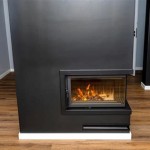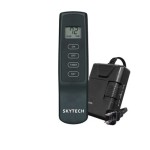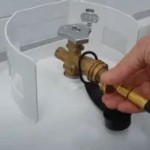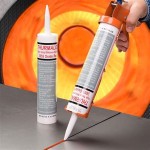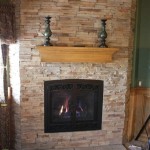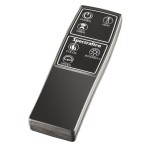Portable Wood Burning Fireplaces: Bringing Warmth and Ambiance Anywhere
Portable wood-burning fireplaces represent a convergence of traditional heating methods and modern lifestyles characterized by mobility and flexibility. These units provide the visual appeal and radiant warmth associated with a classic wood fire, while also offering the convenience of being easily transportable and deployable in various settings. This article explores the characteristics, benefits, considerations, and diverse applications of portable wood-burning fireplaces.
The core concept revolves around containing and controlling a wood fire within a structure designed for transport. This necessitates careful consideration of materials, construction, and safety features. Unlike traditional fireplaces built into a home's structure, portable models are typically freestanding and designed to be used outdoors or in well-ventilated areas. They present a unique solution for individuals seeking an authentic fire experience without the commitment of a permanent installation.
Understanding the Design and Functionality
Key components of a portable wood-burning fireplace generally include a firebox, a chimney or flue system for smoke exhaust, a base or stand for stability, and often, a spark arrestor to prevent embers from escaping. The firebox is the central chamber where the wood is burned. It is usually constructed of steel, cast iron, or other heat-resistant materials capable of withstanding high temperatures. The chimney or flue system is essential for directing smoke away from the immediate vicinity and ensuring proper draft for efficient combustion.
The base or stand provides a stable platform for the fireplace. It is crucial for preventing tipping and ensuring that the unit is level, especially on uneven surfaces. The spark arrestor, typically a mesh screen, intercepts any hot embers that may be carried upward by the rising hot air, reducing the risk of fire hazards. Some models may also incorporate features such as doors or covers to contain the fire and prevent debris from escaping.
Different portable fireplace models offer varying levels of sophistication in their design. Some are simple, utilitarian structures prioritizing functionality and portability. Others incorporate aesthetic elements, such as decorative finishes or viewing windows, to enhance the ambiance. The design choices often reflect the intended use and the target audience.
The size and weight of a portable wood-burning fireplace are important factors to consider. Smaller, lighter models are easier to transport and set up, making them suitable for camping or backpacking. Larger, heavier models may offer greater heating capacity and stability but require more effort to move. The selection process should involve carefully weighing the tradeoffs between portability and performance.
Advantages of Portable Wood Burning Fireplaces
The primary advantage of a portable wood-burning fireplace is its mobility. This allows users to enjoy the warmth and atmosphere of a real fire in locations where a traditional fireplace would not be feasible. This is especially appealing for outdoor enthusiasts, renters, or individuals who move frequently.
Beyond portability, these fireplaces offer a tangible connection to a primal experience. The crackling of wood, the scent of burning embers, and the mesmerizing dance of flames create a relaxing and comforting ambiance. This sensory experience can be particularly appealing in our increasingly digital and disconnected world.
Compared to propane or electric heaters, wood-burning fireplaces offer a unique aesthetic. The natural flames and the rustic charm of burning wood contribute to a distinct visual appeal that many find aesthetically pleasing. They can serve as a focal point for outdoor gatherings or create a cozy atmosphere on a patio or deck.
Furthermore, burning wood can be a relatively sustainable heating option, depending on the source of the wood. When sourced from responsibly managed forests, wood can be a carbon-neutral energy source, as the carbon released during combustion is offset by the carbon absorbed during the tree's growth. However, it's crucial to ensure that wood is sustainably harvested and that the fireplace is operated efficiently to minimize emissions.
Important Considerations and Safety Precautions
Safe operation is paramount when using a portable wood-burning fireplace. Positioning the fireplace in a safe location is essential. It should be placed on a level, non-combustible surface, away from flammable materials such as dry grass, trees, or structures. A clear perimeter should be established around the fireplace to prevent accidental contact with hot surfaces or sparks.
Proper ventilation is crucial to prevent carbon monoxide poisoning. Portable wood-burning fireplaces should only be used outdoors or in well-ventilated areas. Enclosed spaces, such as tents or cabins, are generally not suitable for these units due to the risk of accumulating dangerous levels of carbon monoxide. Regular inspection of the chimney or flue is also important to ensure that it is free of obstructions and functioning properly.
The type of wood used can significantly impact the fireplace's performance and safety. Dry, seasoned hardwood is generally the best choice, as it burns hotter, cleaner, and produces less smoke than green or softwood. Avoid burning treated wood, painted wood, or other materials that can release harmful chemicals when burned. Always follow the manufacturer's recommendations for the type and size of wood to use.
Supervision is always necessary when a fire is burning. Never leave a fire unattended, especially when children or pets are present. Keep a fire extinguisher, a bucket of water, or a shovel nearby in case of emergencies. Before leaving the area, ensure that the fire is completely extinguished and that all embers are cold. This can be achieved by dousing the embers with water and stirring them thoroughly.
Cleaning and maintenance are also important for maintaining the fireplace's performance and safety. Regularly remove ashes from the firebox to prevent buildup and ensure proper airflow. Inspect the chimney or flue for creosote buildup and clean it as needed. Creosote is a flammable substance that can accumulate in chimneys and pose a fire hazard. Store the fireplace in a dry location when not in use to prevent rust and corrosion.
Local regulations and fire bans must be followed meticulously. Many jurisdictions have regulations regarding open fires, especially during dry seasons. Familiarize yourself with local ordinances and any fire bans that may be in effect before using a portable wood-burning fireplace. Failure to comply with these regulations can result in fines or other penalties.
Applications and Versatility
Portable wood-burning fireplaces find applications in a diverse range of settings. They are popular with campers and outdoor enthusiasts who appreciate the warmth and ambiance of a real fire while enjoying nature. They can be used to heat a campsite, cook food, or simply provide a gathering place for socializing.
Homeowners often use portable wood-burning fireplaces on patios, decks, or in backyards to create a cozy outdoor living space. They can extend the use of outdoor areas into cooler months, providing a comfortable environment for relaxation and entertaining guests. Some models can even be used in covered porches or gazebos, provided that adequate ventilation is ensured.
Event organizers utilize portable wood-burning fireplaces to add a touch of warmth and ambiance to outdoor events such as weddings, parties, and festivals. They can create a focal point for gatherings, provide a source of heat, and enhance the overall atmosphere. The portability of these units makes them easy to transport and deploy in various event locations.
Emergency preparedness is another potential application. In the event of a power outage or other emergency situations, a portable wood-burning fireplace can provide a source of heat and light. It can be a valuable tool for staying warm and comfortable in situations where conventional heating systems are unavailable. However, it is crucial to prioritize safety and ensure adequate ventilation in such circumstances.
Artistic and decorative purposes can also be served by portable fireplaces. Their visual appeal can enhance a garden or outdoor setting. Some individuals even customize their portable fireplaces with decorative elements to reflect their personal style. The possibilities for creative expression are virtually limitless.

Original Outbacker Stoves Portable Wood Burning Camping
:max_bytes(150000):strip_icc()/__opt__aboutcom__coeus__resources__content_migration__treehugger__images__2015__09__Frontier-109-42f2c2754a734d3b85da9804d1f055ec.jpg?strip=all)
Portable Woodstove Folds Down Heats Up Tents Yurts Tiny Homes
:max_bytes(150000):strip_icc()/__opt__aboutcom__coeus__resources__content_migration__treehugger__images__2015__09__Frontier-200-8b15c3a2c7f4499b83792cc91caf1ec1.jpg?strip=all)
Portable Woodstove Folds Down Heats Up Tents Yurts Tiny Homes
:max_bytes(150000):strip_icc()/__opt__aboutcom__coeus__resources__content_migration__treehugger__images__2015__09__Frontier-85-d84fb3dd344047cf9f6ed667918472aa.jpg?strip=all)
Portable Woodstove Folds Down Heats Up Tents Yurts Tiny Homes

Portable Freestanding Wooden Burning Fireplace Pellet Heat Powered Stove Fan China Wood Made In Com

10 Portable Fireplaces For Petite Places Fireplace Indoor Design

Portable Indoor Wood Burning Fireplace Pellet Stove Tiny House
:max_bytes(150000):strip_icc()/__opt__aboutcom__coeus__resources__content_migration__treehugger__images__2015__09__Frontier-147-9fa171231d184aa7b90141e4fbf64e54.jpg?strip=all)
Portable Woodstove Folds Down Heats Up Tents Yurts Tiny Homes

Portable Stove If Campfire Just Isn T Enough Gearjunkie

Modern Portable Electric Fireplace Stove Heater W Adjustable Led Flame Black 1 Unit Fry S Food
Related Posts

